We are a big company wich produce wines and craft beer following the passion that binds us to our farm.
Our wine and beer philosophy is based on the maintenance of the ancient agricultural traditions. Our cellars are the result of the successful symbiosis of tradition and innovation.
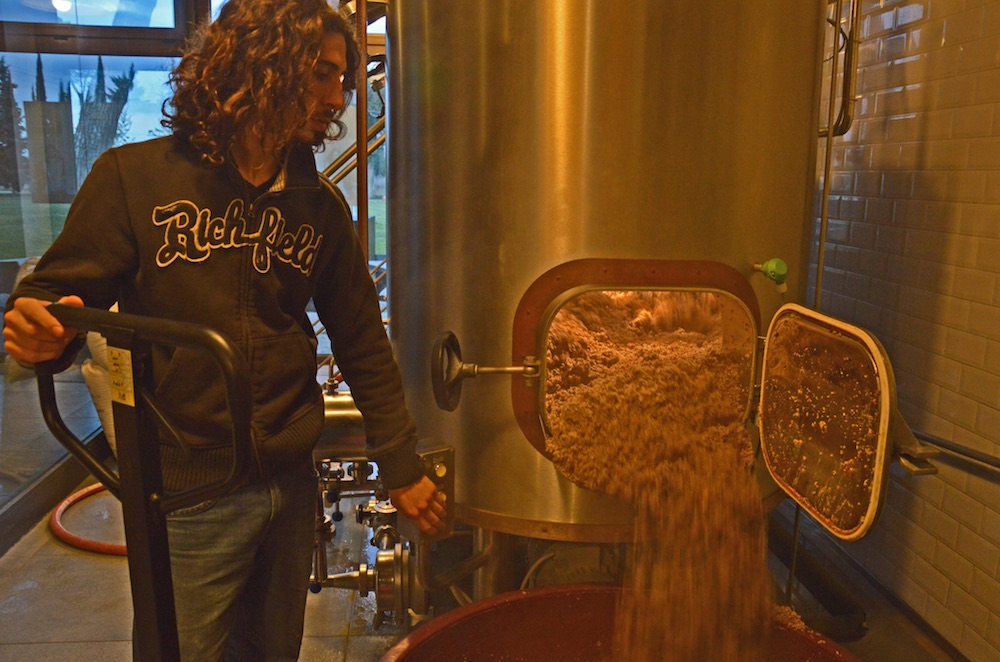
We produce beer with barley that we grow in our fields .The Agricultural craft Brewery J63 (inside of the Torre a Cenaia company)is one of the few activities with these features in Italy.
The name “Agricultural” is because the same farm, in which the brewery is located, cures the entire production process of beer, from the planting of barley in the fields of the estate until to the moment when the drink is ready to be served and enjoyed in the glass.
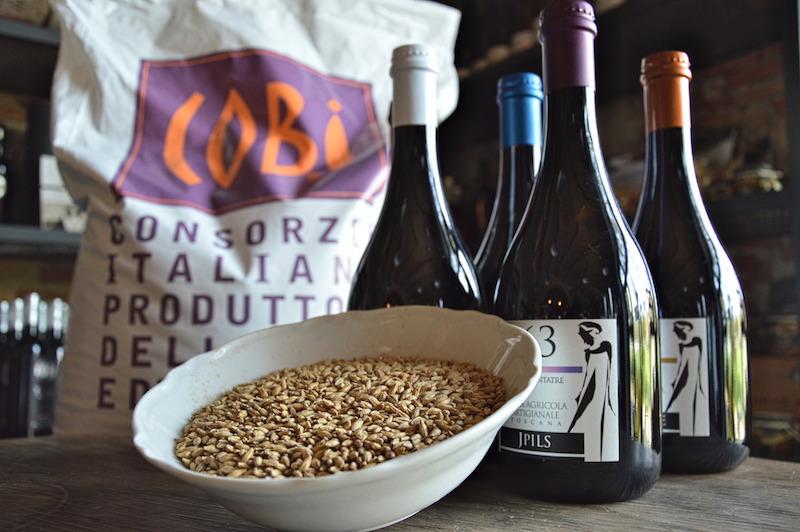
We define craft beer, beer produced by small independent breweries and not subjected, during the production phase, by pasteurisation and microfiltrationprocesses. A small independent brewery is legally and economically independent of any other brewery and uses facilities physically separate from those of any other brewery, it does not operate under license and its annual production does not exceed 200,000 hectoliters, including in this quantity the quantity of product for third account.
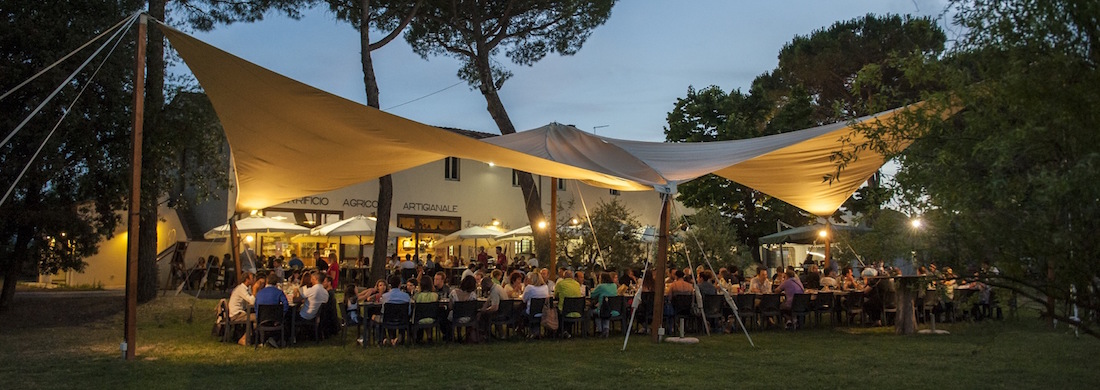
Among our craft beers, we have J63 Rubra: it has recently got the title of Great Beer Slow Food, among 2,708 tasted beers produced in more than 512 breweries. The Guide to Beers of Italy 2017, edited by Slow Food and in bookstores in a few days is now in its fifth edition. Be part of the Slow Food Guide is equivalent to receive the consecration of the Ghota of the Italian beer
A quality recognition that for the first time graduates an agricultural beer as Great Beer
J63 HISTORY
It is a fascinating story suspended between reality and legend, the one that binds the Agricultural Estate Torre a Cenaia and its territory to the project of Agricultural Craft Brewery J63.
J is for , Julia young girl and martyr, the patron saint of Livorno, whose remains were stolen from Corsica and were brought to Brescia, passing through Tuscany and stopping one night, it is said, in the millennial church of Torre a Cenaia.
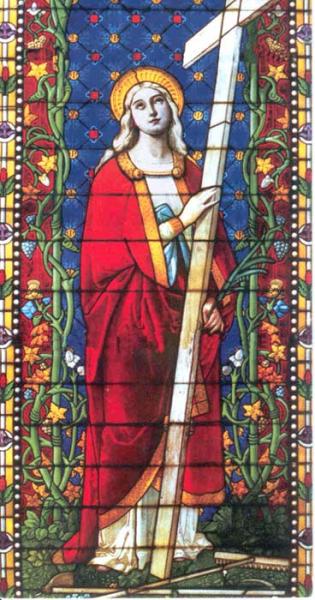 The road traveled by St. Julia was the Via Francigena, the famous route full of meaning, formerly followed by thousands of wayfarers, dotted with inns where pilgrims stopped to refresh themselves with a hot meal and a beer, a very widespread drink at that time in places of rest and refreshment, as it was safer and more nutritious than water. 63 because it is a magic number and, according to the Kabbalah, represents the fertilizing sun that generates life, but especially because it is inextricably linked to the history of Torre a Cenaia. Right in 763 A.D., in fact, on their journey from Corsica to Brescia, Julia’s relics remain in the village of Cenaja. In 1463, moreover, Luca Pitti, an ancestor of Count Robert Pitti of Cenaia, is awarded the title of Captain of the People and since then the Red Cross of the Florentine People enriches the coat of arms of the family, now inherited from the Estate.
The road traveled by St. Julia was the Via Francigena, the famous route full of meaning, formerly followed by thousands of wayfarers, dotted with inns where pilgrims stopped to refresh themselves with a hot meal and a beer, a very widespread drink at that time in places of rest and refreshment, as it was safer and more nutritious than water. 63 because it is a magic number and, according to the Kabbalah, represents the fertilizing sun that generates life, but especially because it is inextricably linked to the history of Torre a Cenaia. Right in 763 A.D., in fact, on their journey from Corsica to Brescia, Julia’s relics remain in the village of Cenaja. In 1463, moreover, Luca Pitti, an ancestor of Count Robert Pitti of Cenaia, is awarded the title of Captain of the People and since then the Red Cross of the Florentine People enriches the coat of arms of the family, now inherited from the Estate.
The red thread, between mysticism and documented reality, interlaces characters, places, events and numbers of this story and leads us to the ancient farmhouse that now houses the Agricultural Craft Brewery J63.
63 is its street number.
SLOW FOOD BEERS GUIDE
The Guide to Italian beers now in its fifth edition, describing a world that in all these years has evolved deeply and with great speed. When, between 2007 and 2008, they started to think about the first edition, the Italian craft brewing was still a limited phenomenon, not only from a numerical point of view (in the first edition they were reviewed 141 breweries, more than 500 today , about half of those active in Italy), but above all as a cultural relevance and media publicization: then you could certainly talk about niche. Today things have changed, the beer has landed even in Parliament, where people discuss the definition of craft beer. From niche it has become fashionable phenomenon, and people talk a lot about it, unfortunately, not always correctly. All these years the guide has followed the evolution of this fascinating field. He did it with care, passion and respect. Attention to all the nuances of the growth in all the themes that the explosion of craft breweries has inevitably raised, by the very definition of craft beer (on which we remain rather skeptical), to the opportunity to develop a chain of domestic raw materials, to the absurd and dangerous “crafty” attack (beers only falsely craft) of some multinationals, to the evolution of the types produced by our craftsmen. Evolution that led to the last period also to the international recognition of a “style” Italian, the Italian grape ale (family of beers that involves the use of grape in some form between the ingredients).
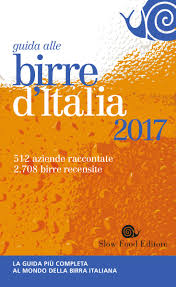
Slow Food since the dawn of brewing movement has intuited the revolutionary impact of those few visionary artisans who in the second half of the nineties opened the first Italian brewpub. From the first moment it understood that he was going through a very important phase of history, which would forever change the concept of beer. It followed brewers in their growth, always trying to investigate, together with them, the complex dynamics of this evolution. Italian producers are lucky: they should not be bound by rules, to traditions, to cultures that other countries are likely to be blockers. They are free to wander among the raw materials, production techniques, the stylistic inspirations. We are convinced that this freedom is a great treasure, perhaps the greatest and for that, when we taste a beer, we try not to think about the style of reference, not to be conditioned by the comparison with the great classics, but we “read” every beer with the same freedom that brewers have in producing it. For this they taste beers (and this year they have been more than 2,600) that have character and are easy and funny to accompain with the dishes ( it is known that in Italy we do not drink without thinking about food …). The raw materials and the native hops are fine, the contamination with the world of wine has a balanced result and, above all, that in the glass continues to be … a beer! However they are the awards for beers and breweries to attract the attention of the public, awarded on the basis of different criteria.
According to a well-established formula, “premiums” are divided into three types. Slow Beers are those which in addition to a high organoleptic value, are able to excite telling the story of a territory or of a particular reality. The Daily Beers are those which in addition to a high quality level are distinguished by balance, simplicity and pleasantness. Finally the Great Beers are those of absolute organoleptic value, not to be missed for anything in the world.

